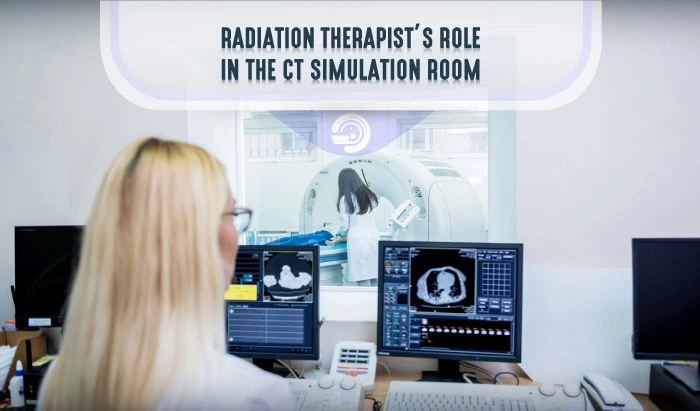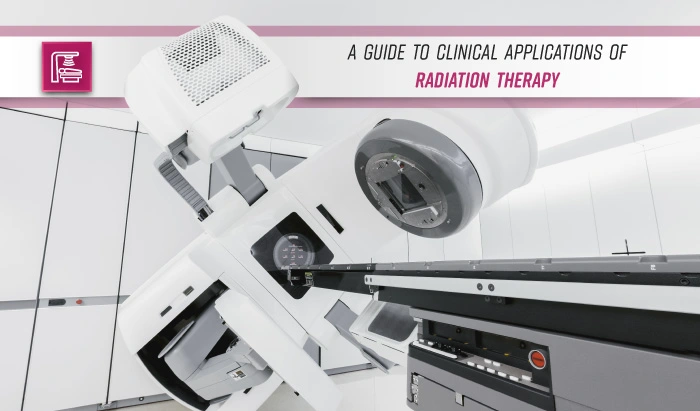The Role of RTTs in Providing Patient Emotional Support
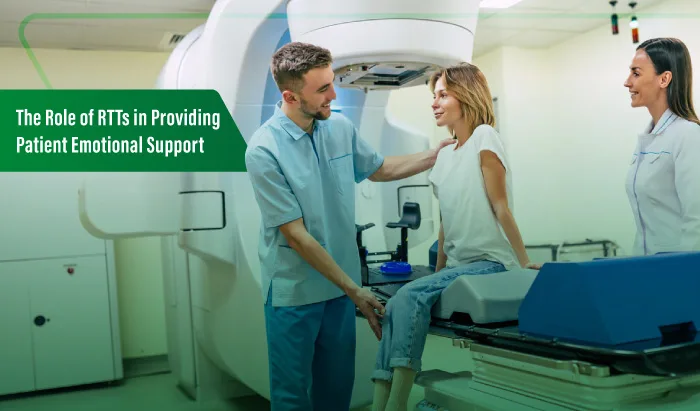
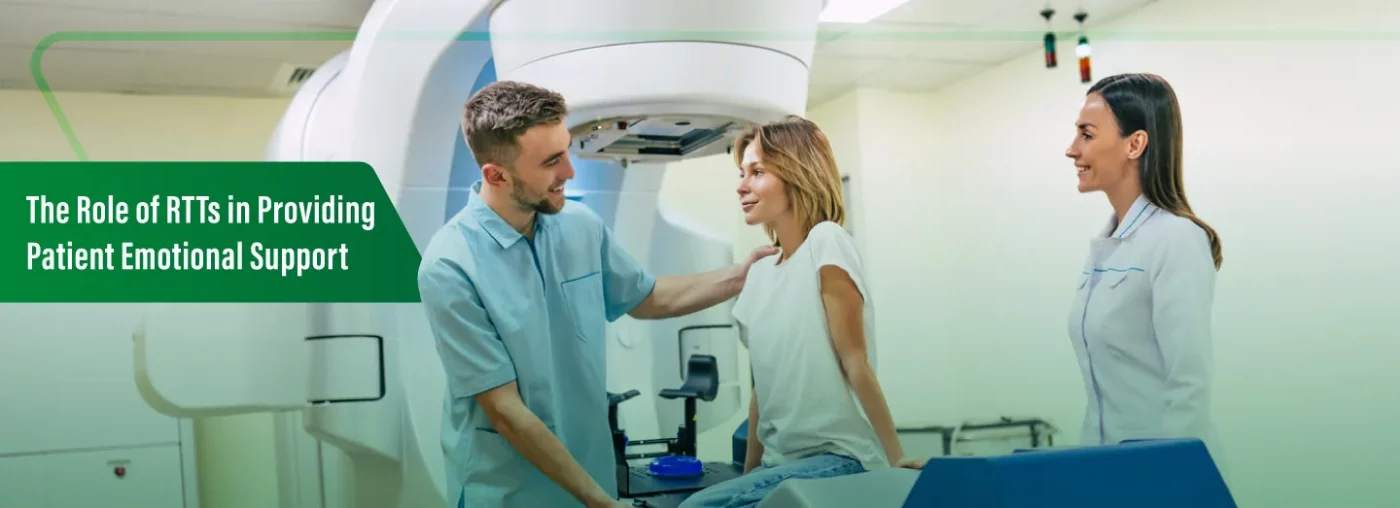

Almost all cancer patients report grappling with their emotions at various points during their treatment. It is common for patients to feel worried, sad, scared, furious, disappointed, alone, or powerless. While radiation therapy may have an indirect effect on patients’ emotions due to exhaustion or changes in hormone balance, it is not a direct cause of mental or emotional struggle. Regardless, it is part of the radiation therapist’s role to be a pillar of emotional support for the patients they help to treat.
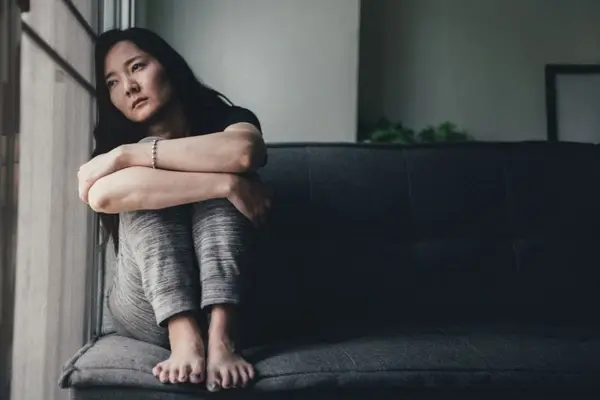
As a radiation therapist, you typically see your patients five days a week for somewhere between three and seven weeks. During this time, you do more than simply treat the patient with radiation therapy—you provide comfort and support, as well. While this is a gratifying part of the job, it may also be emotionally exhausting. You must have compassion and strong interpersonal skills. Part of your job is to listen to the patient, hear their struggles and fears, and refer them properly if necessary.
Below we provide suggestions for how to provide psychological and emotional support for your patient, and how to manage your own mental and emotional wellbeing, too.
Manage Your Own Emotions First
Before providing support for a cancer patient in your care, you must take time to manage your own emotions. A radiation therapist (RTT) will be in regular contact with patients for an extended period, often forming rapport and emotional bonds. This can be rewarding when things go well, but can be difficult and cause emotional exhaustion when your patient is suffering or struggling.
- Prepare yourself first by processing your own emotions. Before you see your patient, take some time to identify how you feel. Realize that your feelings may change from the initial meeting with the patient throughout their treatment. It is important to take time to re-assess your feelings regularly.
- Find out more about the diagnosis. For a variety of reasons, your patient may be unwilling to discuss the specifics of their diagnosis. Repeating the same material to various individuals may be physically and emotionally exhausting. If feasible, the person’s spouse or a common acquaintance may be able to provide you with the fundamentals. Make a note of it and repeat it back to them to ensure that you have the proper information. Do not press for further information if it is unknown or has not been disclosed.
- Consider the situation from your patient’s point of view. Consider a moment when you were afraid or ill and how it felt at the time. What did you want to talk about? How would you like to be treated?
- Remind yourself that your patient’s appearance will change during their time with you. Cancer and many therapies cause fatigue, weight loss, and hair loss. All are typical adverse effects. Remind yourself not to comment on any physical changes you notice in your patient, but begin your visit by saying something like, “It’s nice to see you.”
Provide Emotional Support For Your Patient
As RTTs are in regular contact with a patient throughout the course of their radiation therapy treatment, they are well-situated to investigate patients’ needs and alleviate their concerns. In addition to the technical preparation and delivery of radiation therapy, RTTs are also uniquely positioned to fine-tune information and give comfort to patients regarding treatment expectations and potential adverse effects, along with providing advice on methods to alleviating those side effects. Indeed, research shows that training RTTs in communication and interpersonal skills results in increased patient knowledge of radiation therapy and increased satisfaction with the therapy, resulting in less discomfort, fear, and anxiety regarding therapy.
- Quality Assurance (QA) Analysis is an extremely useful tool for radiation therapist’s to plan and evaluate their interactions with a patient. Check out the example below.
-
Setting the scene - For example
- Introduces self
- Develops a rapport with the patient
- Determines patient treatment history
- Allows patient to explain concerns and expectations of appointment
- Explores what the patient knows about radiation therapy and procedure
- Describes role of the radiation therapist
Explains Procedure - For example
- What the CT or treatment procedure is going to be like
- Duration of the appointment today
- Why procedure is necessary
- Measurements, land marking
- Asks whether the patient has other concerns
Patient understanding - For example
- Embarrassing disturbing topics handled directly and sensitively
- Enables patient to explain their perspective fully
- Phrases questions simply and clearly
- Checks that patient understand what has been said
- Uses silence appropriately
- Acknowledges that much information has been given and concerns may arise after
- Repeats and summarizes important information
- Makes an appropriate and legible record of the consultation
Active listening techniques employed - For example
- Minimal prompts
- No interruptions
- Paraphrasing responses
- Summarize
Responds to emotional cues- eg. anxiety, depression, distress Anger patient may display than one emotion - For example
- Asks scanning questions
- Responds appropriately and stays calm
- Acknowledges and normalizes, but avoids simple reassurance
- Explores the main source of emotions-explores meaning of events
- Checks information needs are met
- Refers if warranted
Blocking behaviours - For example
- Interrupting
- Disruptions
- Changing the subject
- False reassurance and placatin
Source: Fig. 1 in Halkett, G., O’Connor, M., Aranda, S., Jefford, M., Merchant, S., York, D., Miller, L., & Schofield, P. (2016). Communication skills training for radiation therapists: preparing patients for radiation therapy. Journal of Medical Radiation Sciences, 63(4), 232–241. Available here: https://doi.org/
- Request permission. Before offering advice or asking your patient questions, check to see whether advice or questions are welcomed by the patient. Make it clear that saying no is acceptable.
- Share a good laugh and positivity. When appropriate and necessary, you can use humor and playfulness. A light discussion or a humorous anecdote might brighten a patient’s day.
- Allow for sadness. Do not avoid confronting subjects or feelings. Allow your patients to express how they are feeling without attempting to steer the conversation in another direction.
- Check In. Make time for a phone call to check on your patient. Inform him or her that you will contact them if they miss a therapy appointment.
- Offer to assist. Many people find it difficult to ask for assistance, even when they very much need it. However, your patient will most certainly appreciate the offer of your help.
- Discuss things other than cancer. Cancer is not the primary part of your patient’s identity. Inquire about your patient’s interests, hobbies, and other non-cancer-related issues. People who are undergoing radiation therapy may require a break from discussing their condition.
- Music therapy has been shown to reduce anxiety in a variety of medical contexts. A randomized controlled study investigated the efficacy of a music listening intervention provided by the therapist in patients undergoing curative radiation treatment (RT), and found it effective in reducing patient anxiety. Check with your patient about their music preferences and give this a try!

Final Thoughts
Radiation therapists play a crucial role in supporting patients in managing their emotional states during treatment. Although radiation therapists operate in a technical field, they must be aware of their role in providing patient care and make every attempt to keep patients comfortable—physically, psychologically, and emotionally—throughout their radiation therapy. In fact, research has shown that the more satisfied patients were with RTT interactions and communication, the more positive their attitudes were toward radiation therapy and the lower their pain intensity during treatment. In other words, your support can make a lasting difference to a person living with cancer.
References
- American Society of Clinical Oncology. (2018, March). Supporting a friend who has cancer. Cancer.Net. https://www.cancer.net
- Andersen, B. L., & Tewfik, H. H. (1985). Psychological reactions to radiation therapy: reconsideration of the adaptive aspects of anxiety. Journal of Personality and Social Psychology, 48(4), 1024–1032. https://doi.org
- Clark, M., Isaacks-Downton, G., Wells, N., Redlin-Frazier, S., Eck, C., Hepworth, J. T., & Chakravarthy, B. (2006). Use of preferred music to reduce emotional distress and symptom activity during radiation therapy. Journal of Music Therapy, 43(3), 247–265. https://doi.org
- Egestad, H. (2013). How does the radiation therapist affect the cancer patients’ experience of the radiation treatment? European Journal of Cancer Care, 22(5), 580-588. https://doi.org
- Good Therapy. (2018, November 6). Mental health support for cancer. https://www.goodtherapy.org
- Halkett, G., O’Connor, M., Aranda, S., Jefford, M., Merchant, S., York, D., Miller, L., & Schofield, P. (2016). Communication skills training for radiation therapists: preparing patients for radiation therapy. Journal of Medical Radiation Sciences, 63(4), 232–241. https://doi.org
- Health Times. (2021, March 26). What does a radiation therapist do? https://healthtimes.com.au
- Mattarozzi, K., Fino, E., Panni, V., Agostini, A., Morganti, A. G., & Russo, P. M. (2019). The role of effective radiation therapist-patient communication in alleviating treatment-related pain and procedural discomfort during radiotherapy. Patient Preference and Adherence, 13, 1861–1865. https://doi.org
- Schlembach, P.J. (2017, October 4). Radiation therapy side effects: 5 tips to cope. University of Texas MD Anderson Cancer Center. https://www.mdanderson.org
Disclaimer: The information provided on this website is intended to provide useful information to radiologic technologists. This information should not replace information provided by state, federal, or professional regulatory and authoritative bodies in the radiological technology industry. While Medical Professionals strives to always provide up-to-date and accurate information, laws, regulations, statutes, rules, and requirements may vary from one state to another and may change. Use of this information is entirely voluntary, and users should always refer to official regulatory bodies before acting on information. Users assume the entire risk as to the results of using the information provided, and in no event shall Medical Professionals be held liable for any direct, consequential, incidental or indirect damages suffered in the course of using the information provided. Medical Professionals hereby disclaims any responsibility for the consequences of any action(s) taken by any user as a result of using the information provided. Users hereby agree not to take action against, or seek to hold, or hold liable, Medical Professionals for the user’s use of the information provided.

